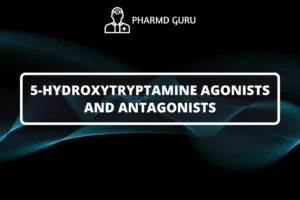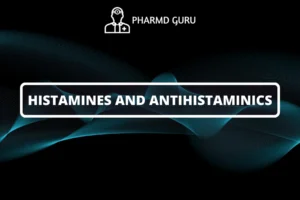Mydriatics and miotics are two classes of drugs that affect the pupillary size and are widely used in ophthalmology. They play a crucial role in diagnosing and treating various eye conditions. In this article, we will provide an overview of mydriatics and miotics, their mechanisms of action, therapeutic uses, and important considerations in their usage.
SCROLL DOWN TO THE BOTTOM OF THIS PAGE FOR ACTUAL NOTES.
TABLE OF CONTENTS:
- Introduction
- Mydriatics
- Mechanism of Action
- Therapeutic Uses
- Common Mydriatic Drugs
- Miotics
- Mechanism of Action
- Therapeutic Uses
- Common Miotic Drugs
- Comparison between Mydriatics and Miotics
- Considerations in Usage
Introduction
The pupillary size is controlled by the iris muscles, and the balance between the dilator and constrictor muscles determines the size of the pupil. Mydriatics are drugs that dilate the pupil, while miotics constrict it. These drugs work by affecting the smooth muscles of the iris and altering the response to the autonomic nervous system.
Mydriatics
Mechanism of Action
Mydriatics act by blocking the muscarinic receptors in the iris sphincter muscle, which leads to relaxation and dilation of the pupil. By inhibiting the parasympathetic nervous system, mydriatics prevent the constriction of the pupil.
Therapeutic Uses
Mydriatics are primarily used in ophthalmic examinations to dilate the pupil, allowing for a better view of the internal structures of the eye. They are also used in the treatment of certain eye conditions such as uveitis, iritis, and ciliary spasm.
Common Mydriatic Drugs
Some commonly used mydriatic drugs include tropicamide, phenylephrine, and cyclopentolate. These medications are available in various formulations such as eye drops and ointments.
Miotics
Mechanism of Action
Miotics, on the other hand, work by stimulating the muscarinic receptors in the iris sphincter muscle, leading to its contraction and constriction of the pupil. This action is mediated by the parasympathetic nervous system.
Therapeutic Uses
Miotics have several therapeutic applications in ophthalmology. They are used in the treatment of conditions such as glaucoma, where the constriction of the pupil helps to improve the outflow of aqueous humor and reduce intraocular pressure.
Common Miotic Drugs
Some commonly used miotic drugs include pilocarpine, carbachol, and echothiophate iodide. These drugs are available as eye drops and are administered topically.
Comparison between Mydriatics and Miotics
While mydriatics dilate the pupil and are primarily used for diagnostic purposes, miotics constrict the pupil and have therapeutic applications in conditions like glaucoma. The choice between mydriatics and miotics depends on the specific clinical situation and the desired effect on the pupil.
Considerations in Usage
When using mydriatics or miotics, it is important to consider certain factors such as the patient’s medical history, the presence of any contraindications or allergies, and the potential side effects associated with these drugs. Proper administration techniques and dosing guidelines should also be followed to ensure safety and efficacy.
ACTUAL NOTES:




